This hearty loaf of gluten-free whole grain bread is made with fiber-rich flours for an earthier flavor and taste. It’s perfect for toasting and spreading with jam for breakfast, or making sandwiches for lunch or dinner too. Totally dairy-free and vegan as well. Bake a loaf or two of this gluten-free brown bread to enjoy homemade bread today!
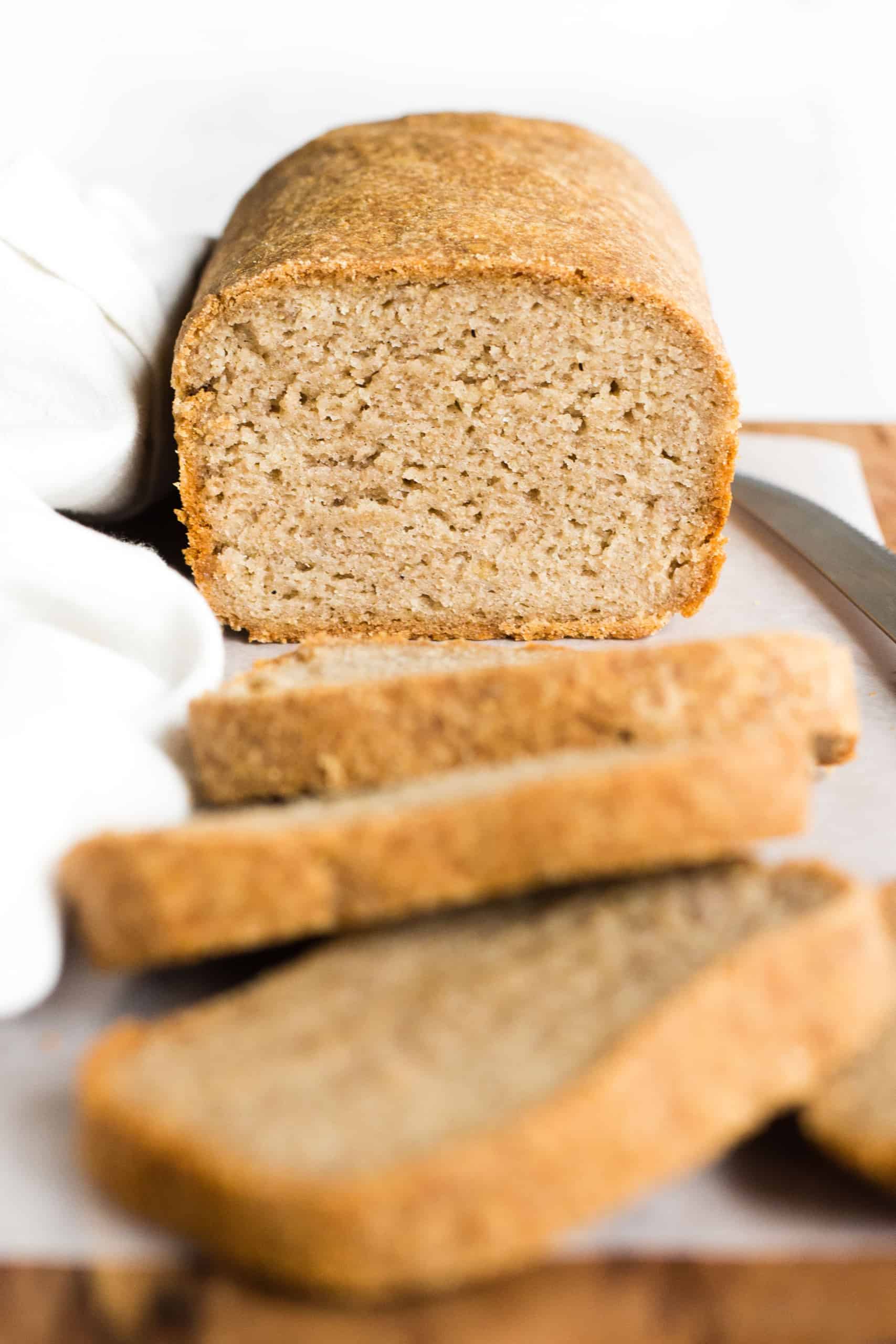
Want to save this recipe?
Enter your email & I’ll send it to your inbox. Plus, get great new recipes from me every week!
Jump to:
- My Love for Homemade Bread
- Our Favorite Gluten-Free Yeast Breads
- An Easy Whole Grain Bread
- Why This Recipe Works
- Ingredients You’ll Need:
- Recipe Notes + Substitutions:
- How to Make Gluten-Free Whole Grain Bread (Step by Step):
- Dish by Dish Tips/Tricks:
- Recipe FAQs:
- Other Gluten-Free Breads to Bake
- Gluten-Free Whole Grain Bread (Dairy-Free, Vegan)
My Love for Homemade Bread
If you’ve followed along this blog for a while now, you might already know that I am obsessed with homemade bread, especially yeast breads.
There’s just something amazing and miraculous about preparing bread dough, watching the yeast work its magic and seeing the bread rise, and finally, to bake the dough and pull out a fresh loaf from the hot oven.
Baking homemade bread feels empowering, because if we can make homemade bread, I’m pretty sure we can do just about anything!
Our Favorite Gluten-Free Yeast Breads
There are plenty of gluten free bread recipes on the blog, but these are definitely our favorites that work great as sandwich breads:
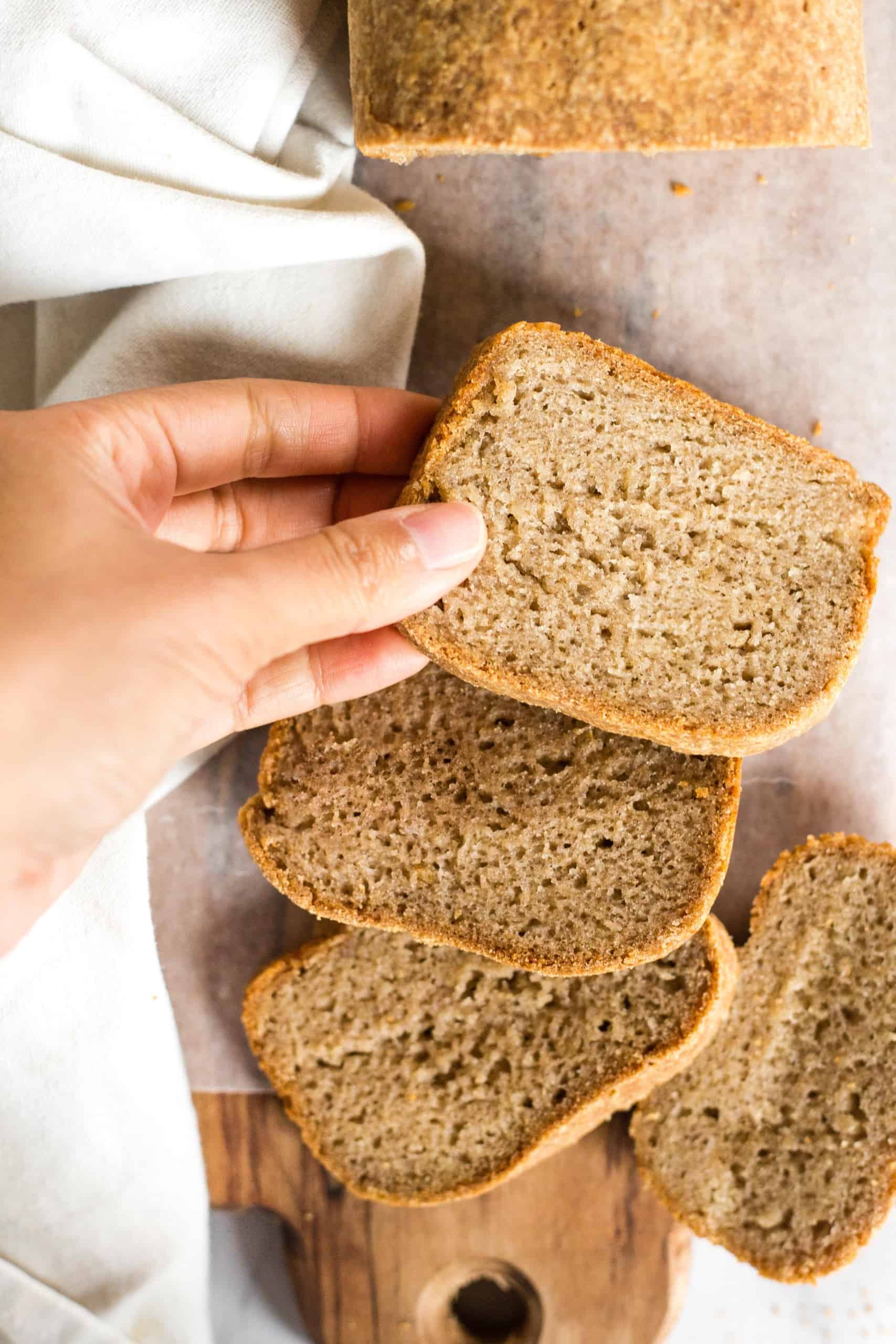
An Easy Whole Grain Bread
Usually, the yeast breads I make tend to involve some proportion of a whole grain flour and a gluten-free all-purpose flour (usually made with lighter flours and starches such as rice flour, tapioca starch, corn starch and potato starch) as the base.
However, this time, I wanted to create a texture, look and taste that’s similar to whole wheat bread – only in a gluten-free version.
After experimenting with different types of gluten-free whole grain flours, I’ve finally come up with this recipe that you’re gonna love! It’s hearty, earthy, with a denser crumb but still retains a soft texture. YUM!
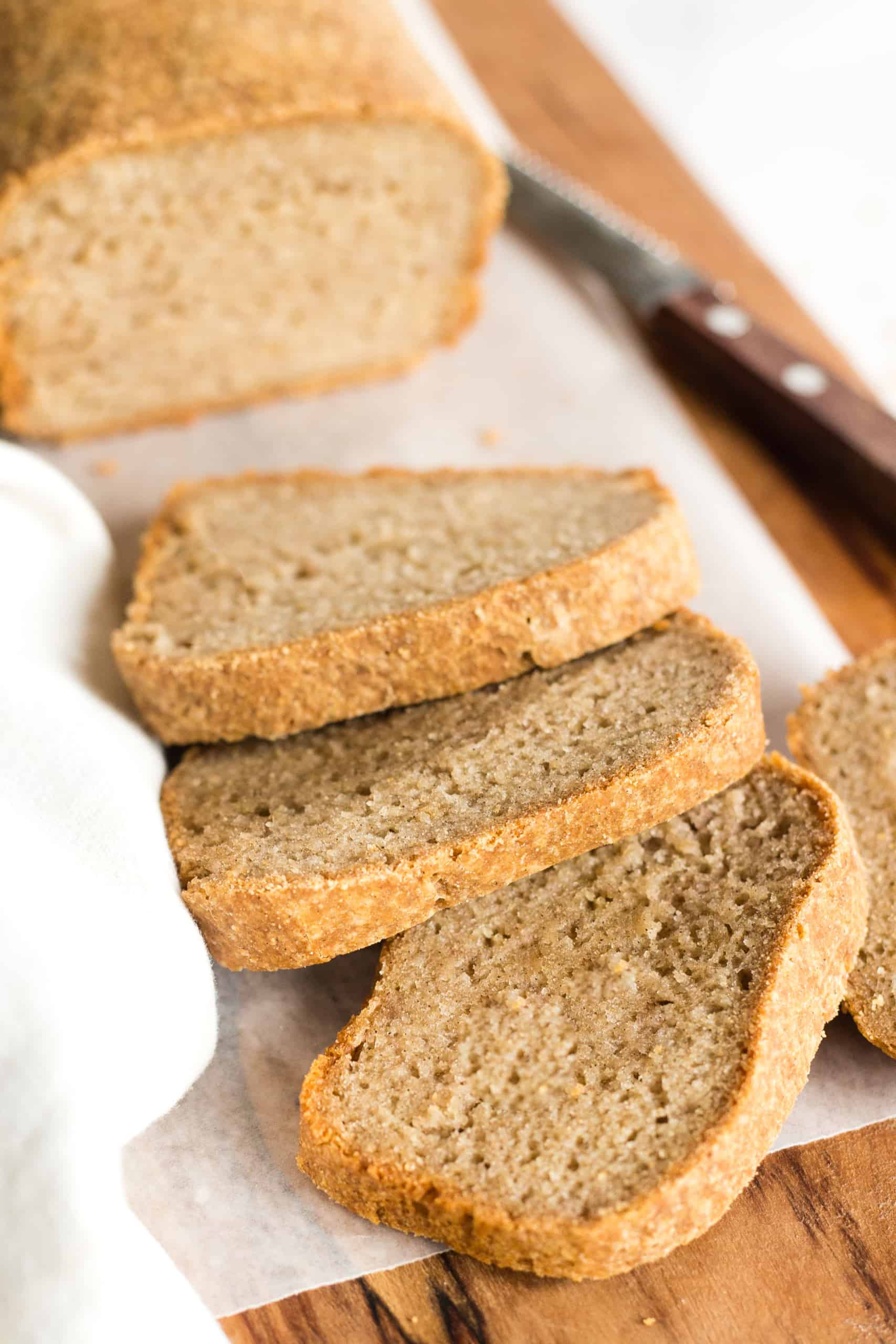
Why This Recipe Works
- Simple Ingredients: The ingredients required for this gluten-free whole grain bread recipe are easily accessible at the local grocery store. No gluten-free flour blend is required.
- Easy to Make: Making the gluten-free whole grain bread dough is as simple as mixing the dry ingredients with the wet ingredients together, which you then leave to rise before baking until golden. Plus, no kneading is required for this gluten-free brown bread, can you believe it?
- Delicious Flavor: Made with flour from whole grains (in particular brown rice flour, sorghum flour and millet flour), this gluten-free loaf has an earthy flavor that you’ll want to eat over and over again!
- Totally Gluten-Free, Dairy-Free and Vegan: The good news is that this beautiful whole grain bread is 100% gluten-free, dairy-free and vegan, which means that even those with Celiac disease or gluten and lactose intolerances, or those simply on a gluten-free diet or vegan diet can enjoy this delicious bread without issues!
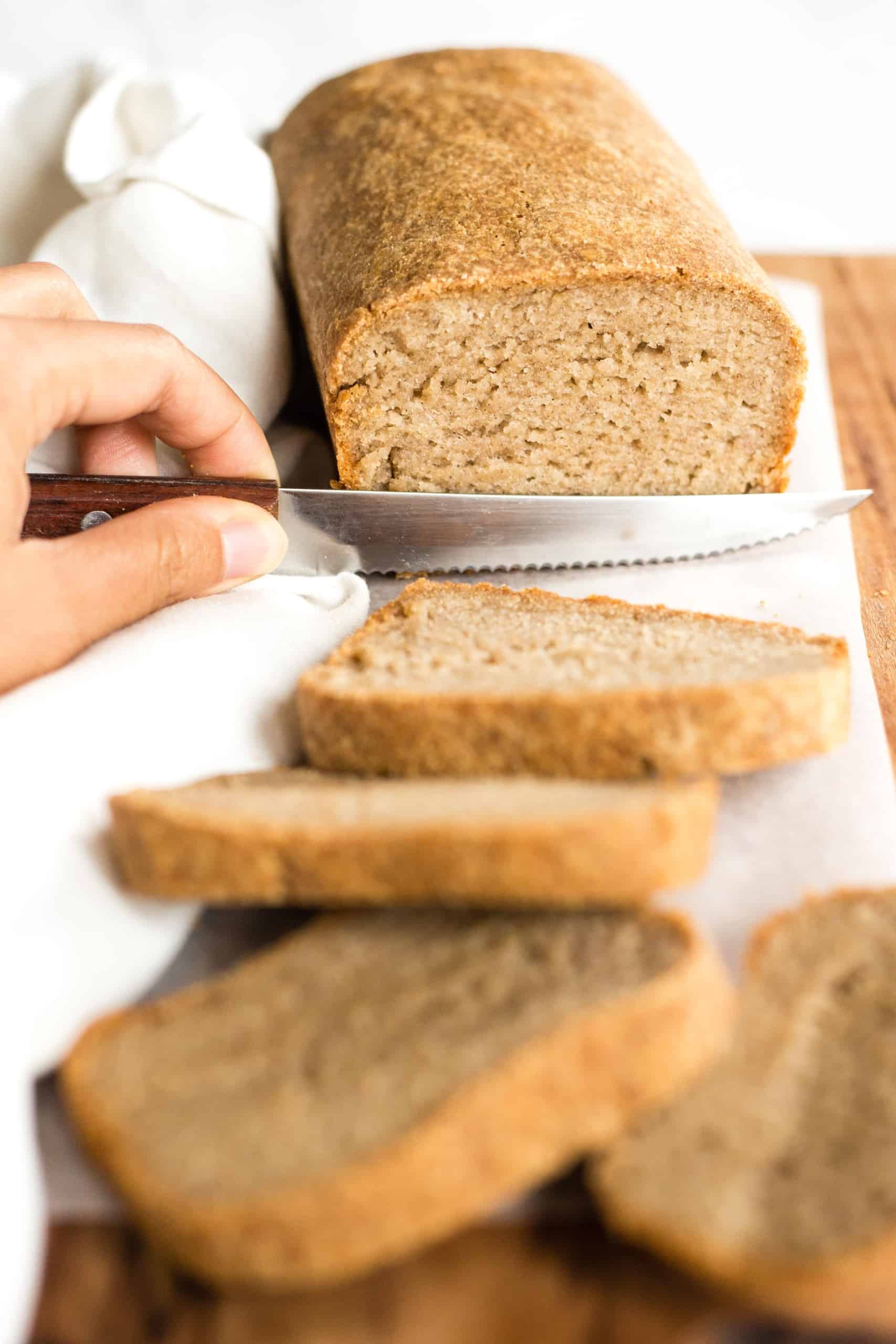
Ingredients You’ll Need:
Here’s a visual overview of the ingredients required for this gluten-free whole grain bread.
(For exact measurements and quantities, please scroll down to the recipe card at the bottom of this post.)
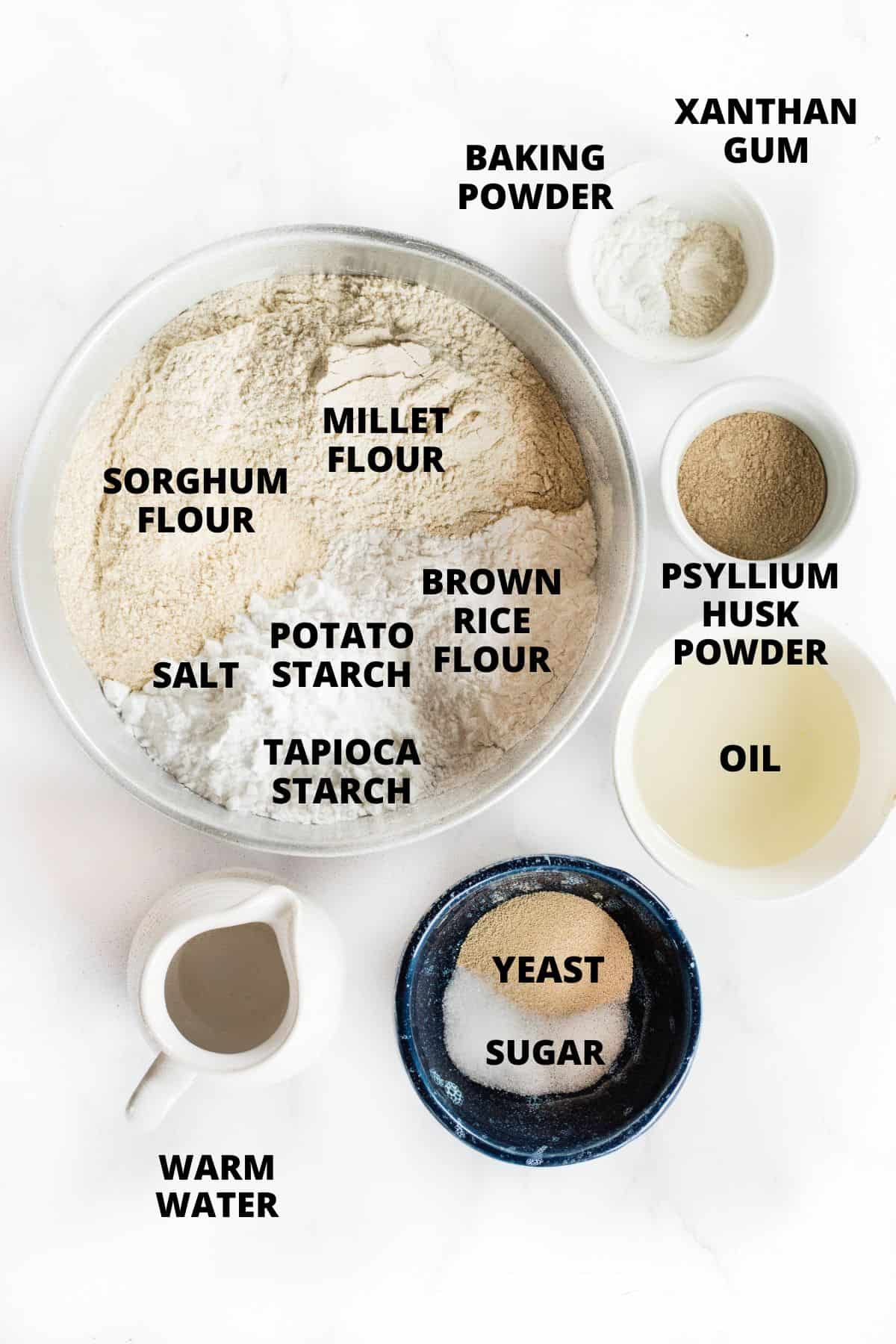
Recipe Notes + Substitutions:
- Brown Rice Flour: I like using brown rice flour as one of the base flours, I would not recommend that you swap this out.
- Sorghum Flour: If you don’t have sorghum flour, you can also use quinoa flour or gluten-free oat flour as a substitute.
- Millet Flour: If you don’t have millet flour, you may use amaranth flour, teff flour or buckwheat flour in replacement.
- Potato Starch: Potato starch helps to bind the ingredients together. If you don’t have potato starch, you may use equal amounts of corn starch instead.
- Tapioca Starch: Tapioca starch is also known as tapioca flour. If you don’t have tapioca starch, feel free to use arrowroot starch instead.
- Xanthan Gum: Xanthan gum is the replacement for gluten in gluten-free flours and helps to bind the ingredients together. Make sure to include this in for best results.
- Baking Powder: In addition to the yeast, baking powder helps to give the bread dough more rise.
- Psyllium Husk Powder: Using psyllium husk powder gives the bread dough more binding power. Make sure you are using the powdered version. If you only have access to whole psyllium husks, you can grind the whole husks in a coffee grinder or high-speed blender until you get a smooth powder.
- Instant Yeast: I like using instant yeast because no pre-activation period is required and you can mix it in with the other dry ingredients directly. If you only have active yeast, make sure to pre-activate the yeast (you can do this by mixing the yeast with the warm water and sugar in a small bowl and letting it sit in a warm area for 5 minutes until it turns foamy).
- Sugar: The sugar is required a “food” for the yeast to feed on to produce the gases required to create the air bubbles in the dough for it to rise. I used white sugar, but you can also use cane sugar, light brown sugar, dark brown sugar or coconut sugar if you prefer.
- Warm Water: Make sure that the water is between 105F to 115F because you need enough warmth for the yeast to be activated, but if the water is too hot, the high temperature will kill the yeast. You may also use an equal amount of warm unsweetened non-dairy milk (such as almond milk, cashew milk, rice milk, tigernut milk or soy milk). Alternatively, if you are not lactose-intolerant, you may also use normal dairy milk instead.
- Oil: I like using sunflower oil because I always have a bottle on hand. You may also use melted vegan butter or another vegetable oil (such as canola oil, olive oil, avocado oil or even melted coconut oil). Alternatively, if you are not lactose-intolerant, feel free to use melted butter or ghee if you prefer.
How to Make Gluten-Free Whole Grain Bread (Step by Step):
1. Grease Loaf Pan
Grease a 8″ x 4″ nonstick metal loaf pan.
(TIP: You may also line the loaf pan with parchment paper to make it easier to remove the loaf.)
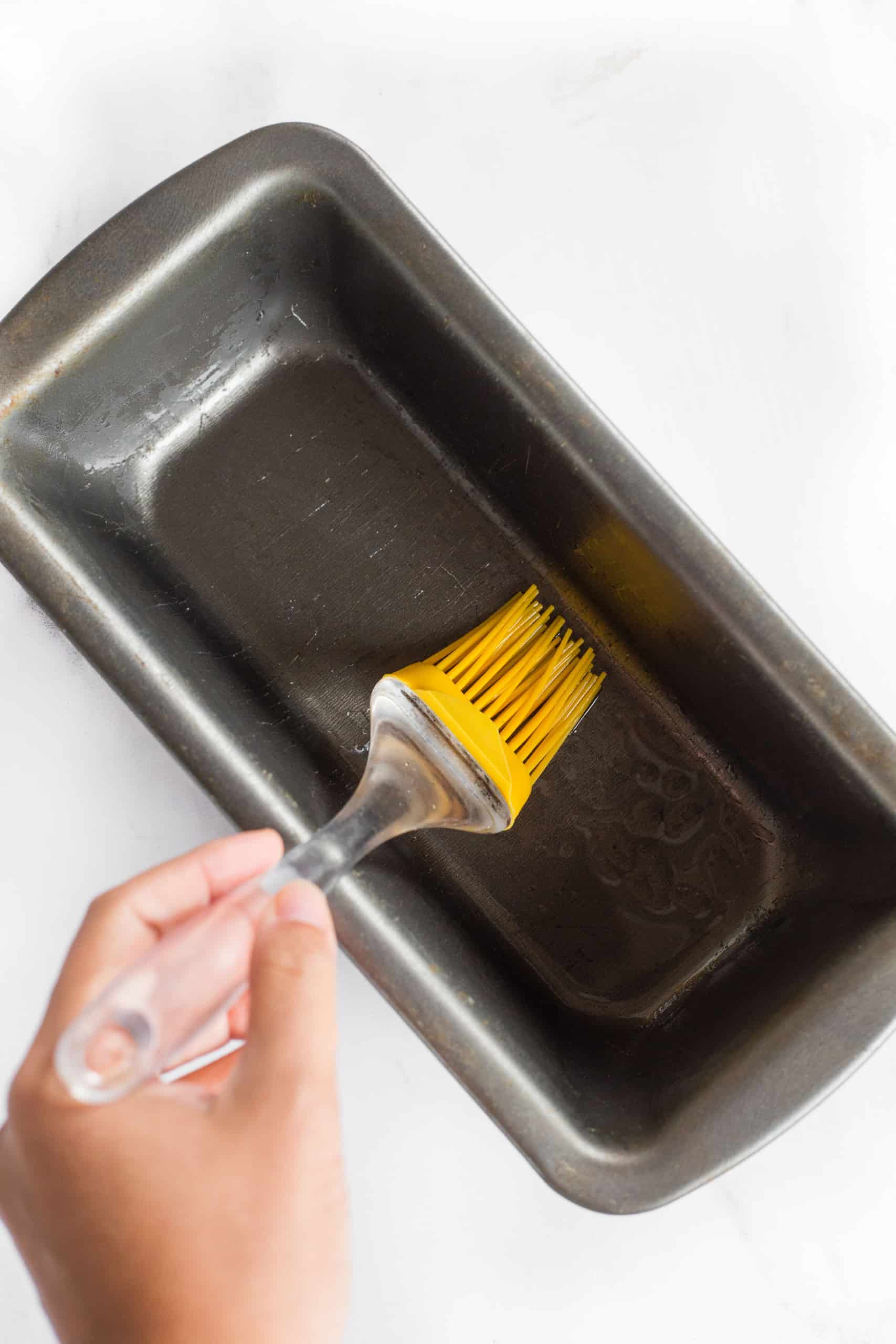
2. Whisk Dry Ingredients
In a large mixing bowl, combine the brown rice flour, sorghum flour, millet flour, potato starch, tapioca starch, xanthan gum, baking powder, salt, psyllium husk powder, instant yeast and sugar together. Whisk well to combine.
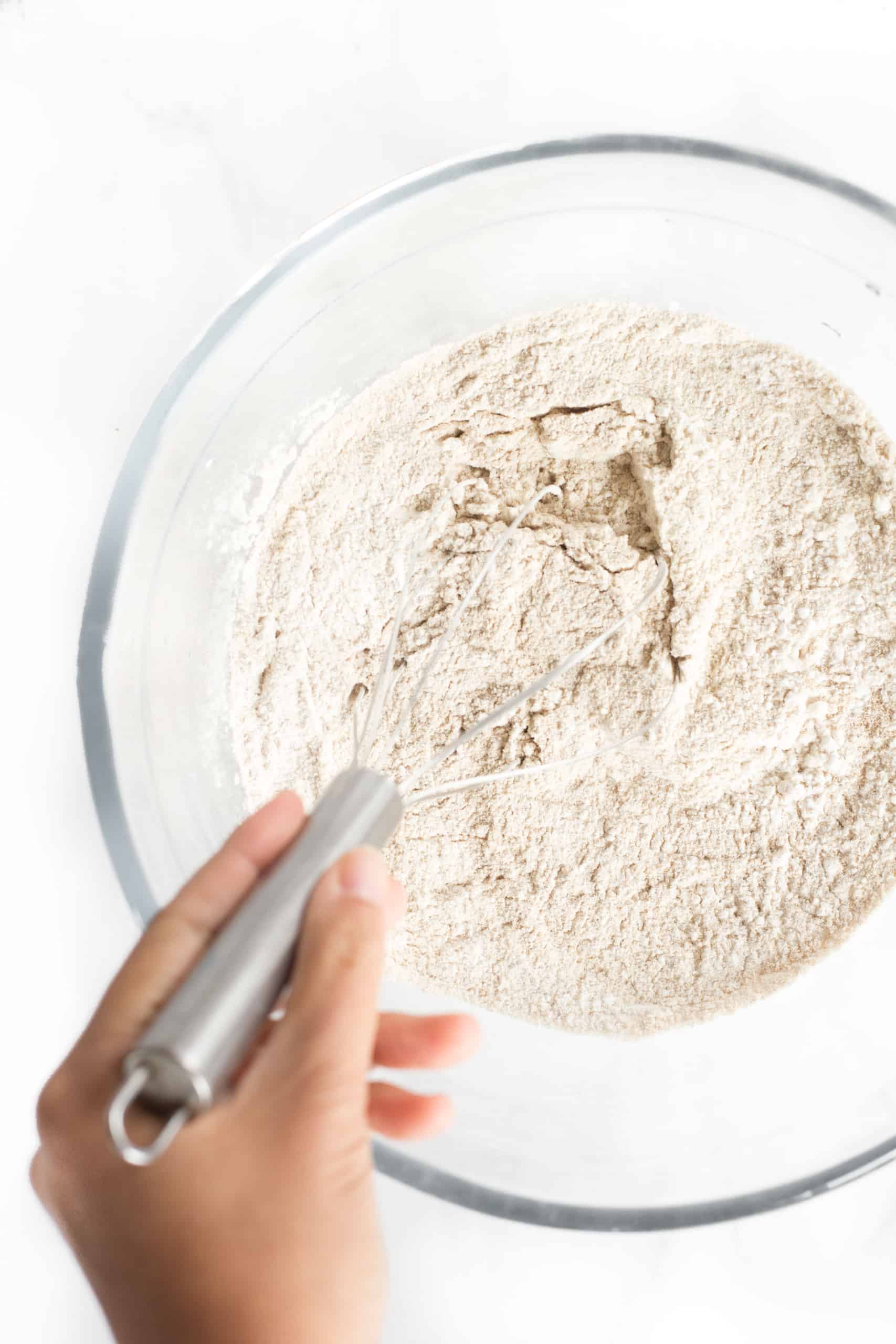
3. Add Wet Ingredients to Form Dough
Add the warm water and vegetable oil to the large bowl with the dry ingredients and mix well to get a homogeneous wet and sticky dough.
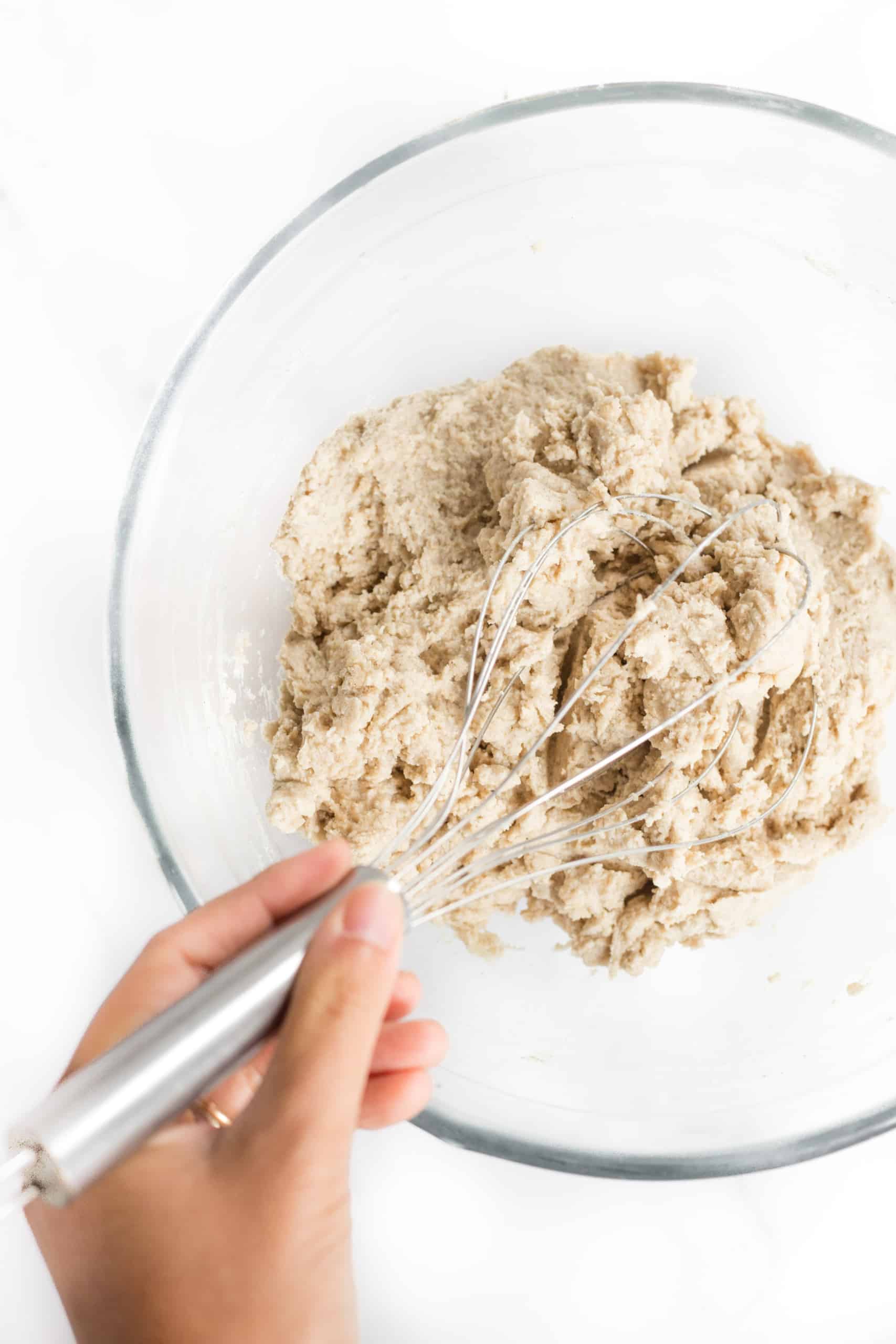
4. Transfer Dough to Loaf Pan
Transfer the gluten-free whole grain bread dough to the previously greased loaf pan and smooth out the top of the dough with a wet spatula.
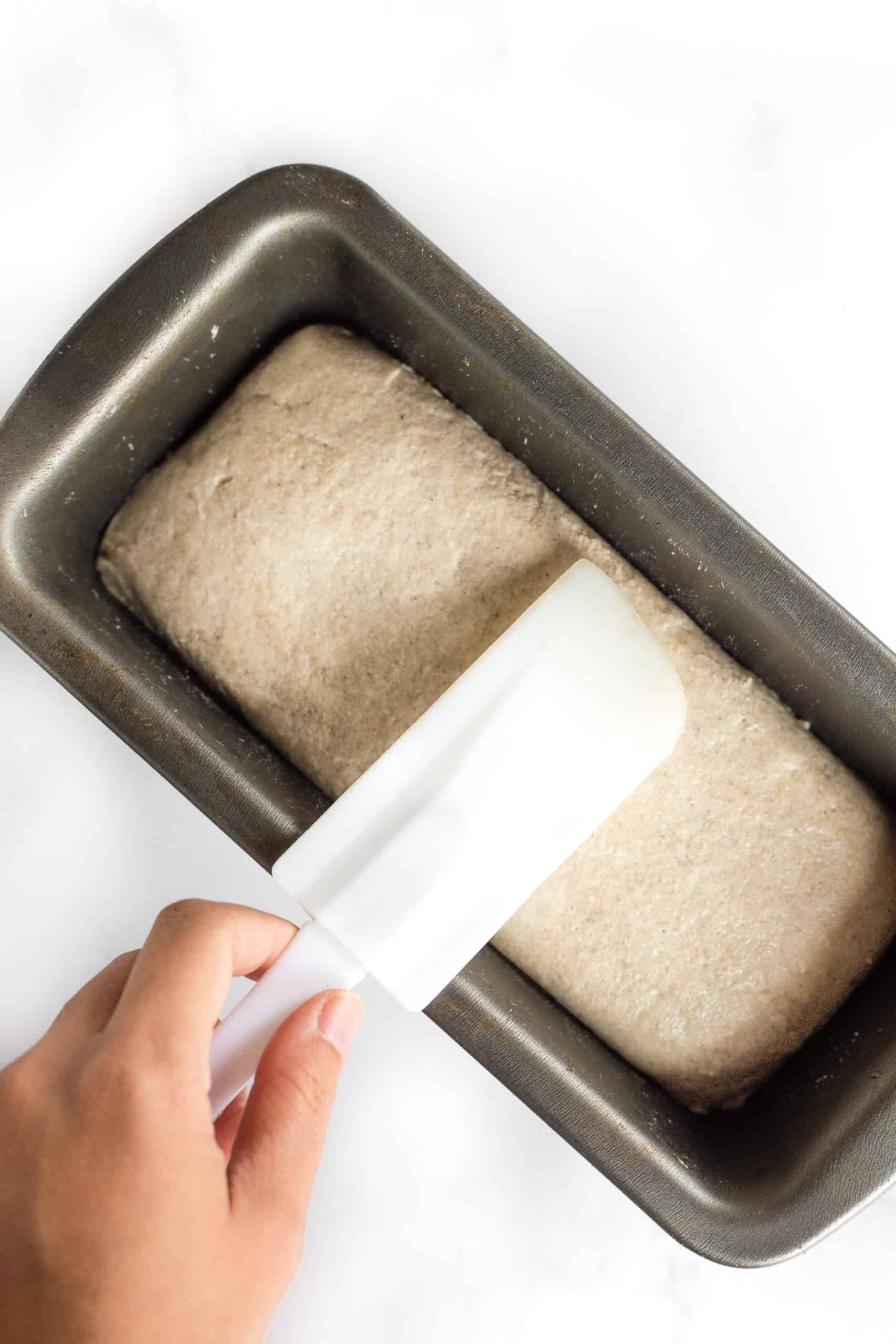
5. Let Dough Rise
Let the dough rise for 1 hour in a warm place free of drafts until it has roughly doubled in size (and has risen to almost the top of the pan).
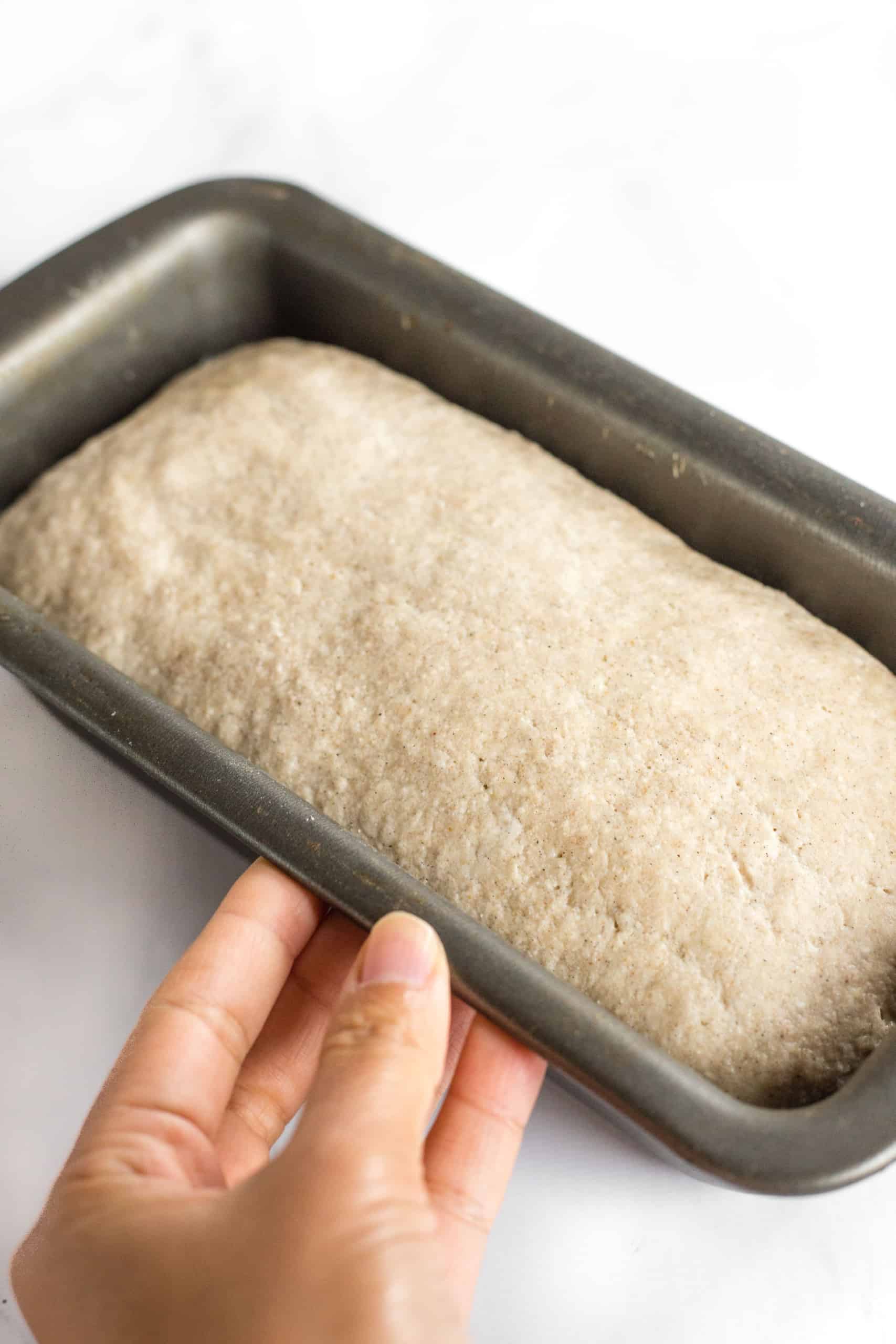
6. Preheat Oven
During the last 15 minutes of the rise, preheat the oven to 350F and arrange the oven rack to the middle position.
7. Bake Until Golden
Bake the dough until it is golden and the loaf sounds hollow when tapped.
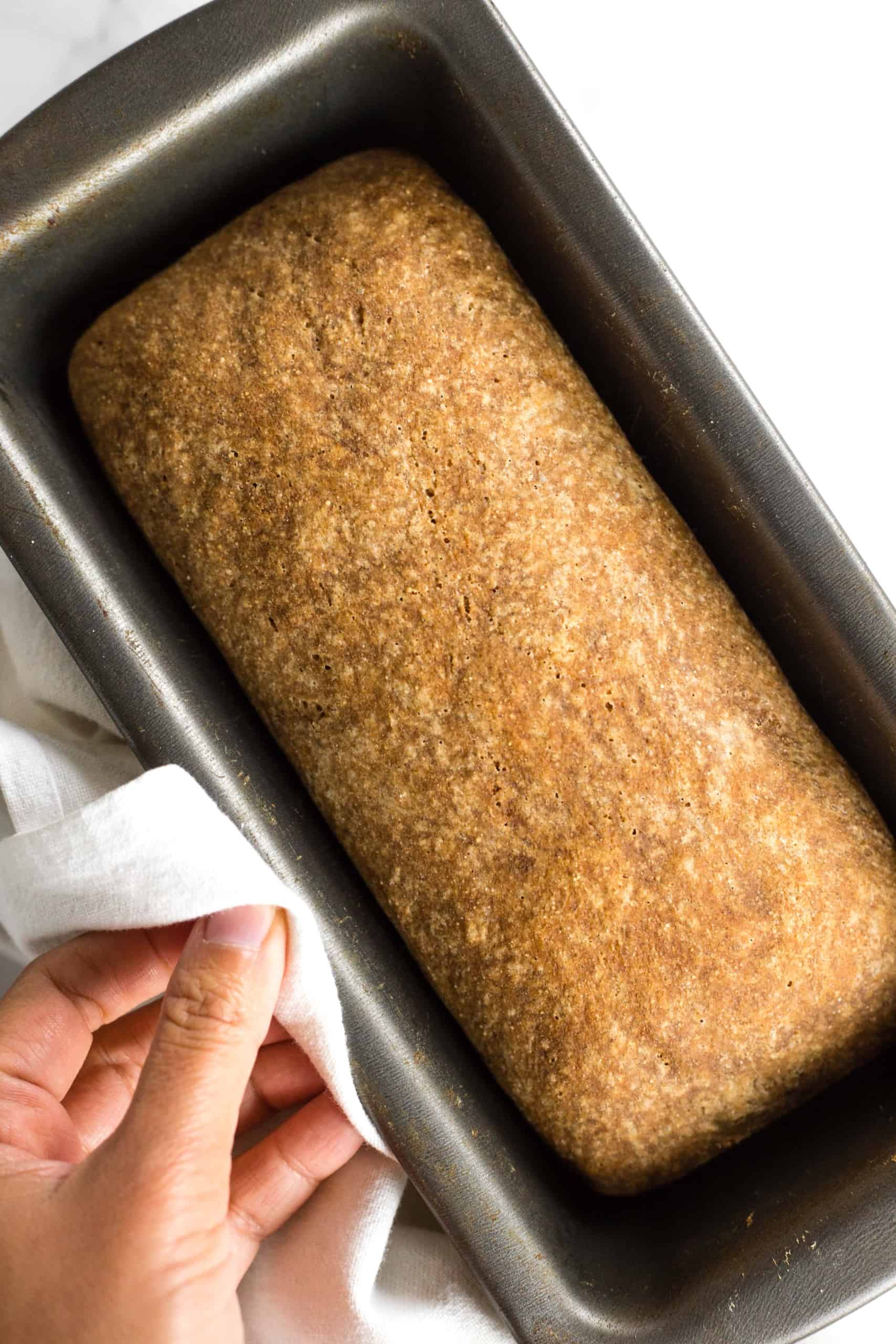
8. Cool Completely Before Slicing
Allow the gluten-free whole grain loaf to cool completely at room temperature on a wire rack before slicing.
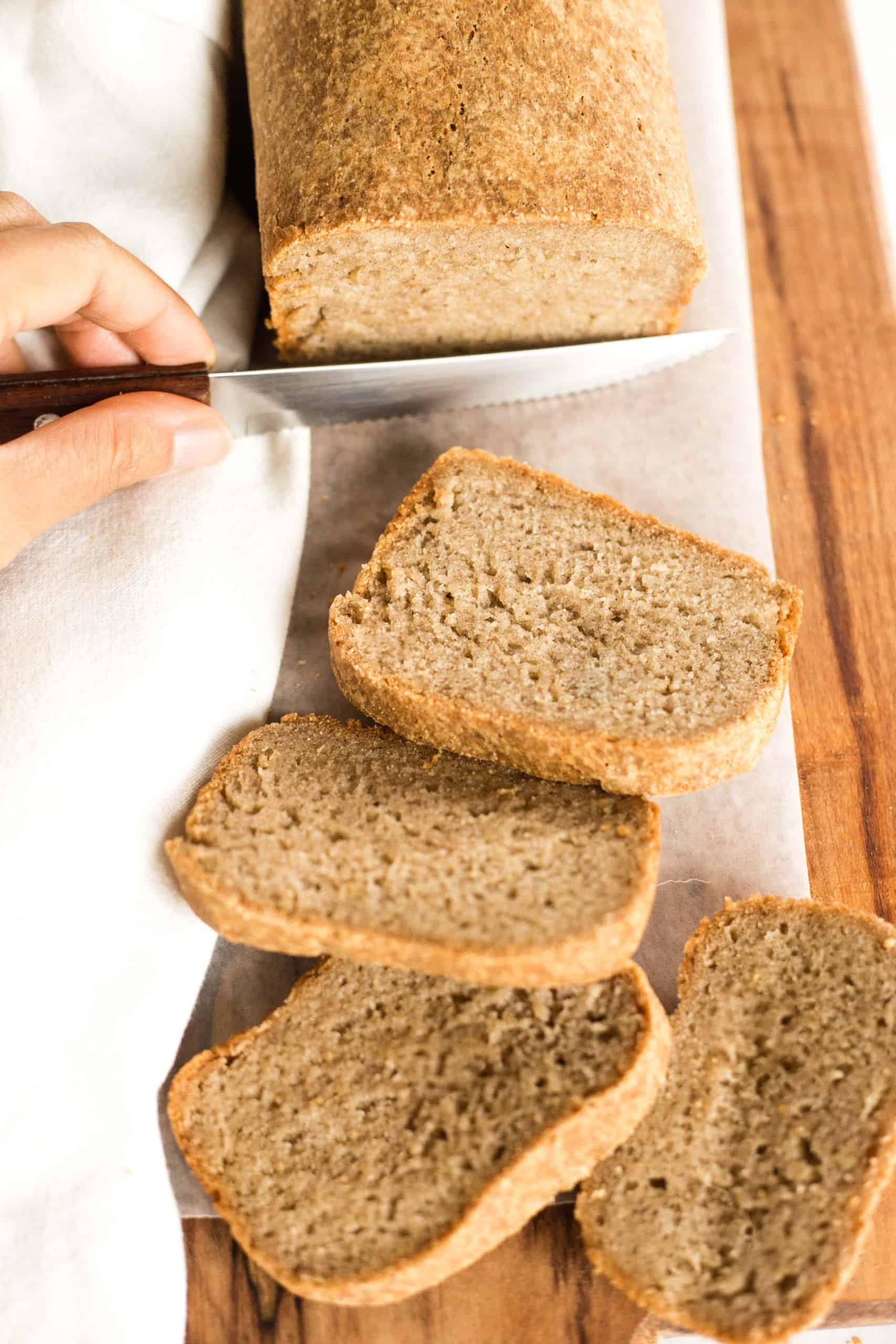
Dish by Dish Tips/Tricks:
- Use a Metal Loaf Pan: I recommend using a nonstick metal loaf pan as metal conducts heat more evenly compared to glass or ceramic.
- Pan Size Determines Loaf Height: I used an 8″ x 4″ loaf pan, which is perfect for this recipe. If you use a wider loaf pan, bear in mind that your loaf will be flatter compared to the loaf in the pictures shown in this post.
- Make Individual Buns: If you prefer to make individual buns instead of a whole loaf, simply divide the dough evenly between the cavities of a regular muffin tin and bake at 350F for 30 minutes instead of 1 hour.
- Optional Add-Ins: Feel free to sprinkle a mixture of nuts and seeds (such as sunflower seeds, pumpkin seeds, sesame seeds, chia seeds, quinoa flakes and flax seeds) on top of the dough before baking for a heartier and fancier-looking loaf.
Recipe FAQs:
To store, place the cooled loaf of gluten-free whole grain bread in an airtight container or wrap in plastic wrap and store in the refrigerator for up to 5 days.
Yes you can! To freeze, place the cooled gluten-free brown bread in freezer-safe ziploc bags or wrap in various layers of plastic wrap and freeze for up to 2 months. To defrost, let the frozen loaf thaw overnight in the refrigerator before slicing and toasting.
I personally don’t own a bread machine so I haven’t tried making this in one yet. However, I believe there shouldn’t be a problem (you can use the gluten-free setting) on your machine.
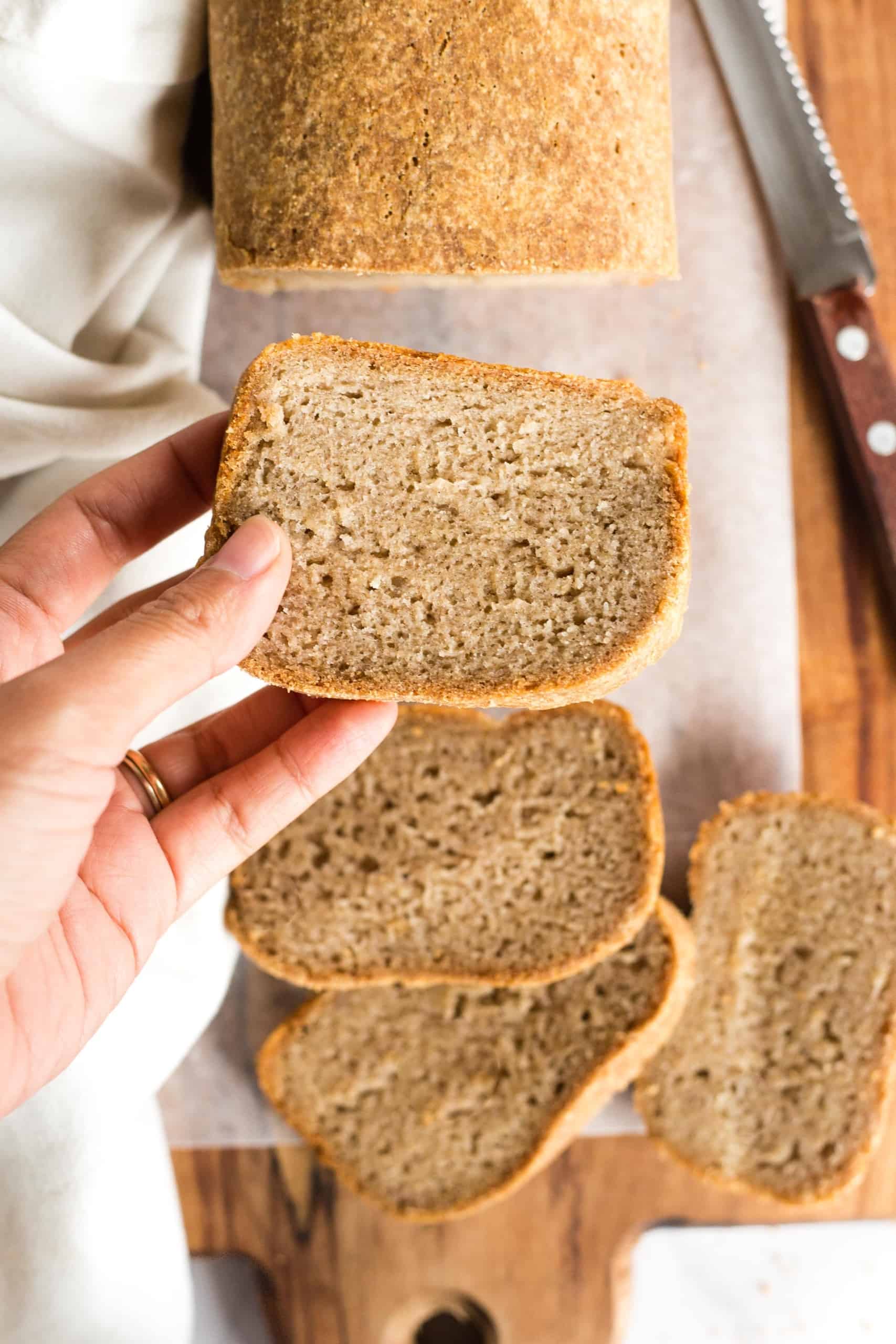
P.S. If you try this recipe, I’d love for you to leave a star rating below, and/or a review in the comment section further down the page. I always appreciate your feedback. Be sure to check out my entire Recipe Index for all the recipes on the blog. You can also follow me on Pinterest, Facebook or Instagram! Sign up for my Email List to get fresh recipes in your inbox each week!
Print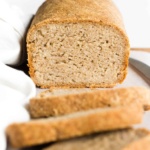
Gluten-Free Whole Grain Bread (Dairy-Free, Vegan)
- Total Time: 2 hours 15 minutes
- Yield: 1 loaf 1x
- Diet: Gluten Free
Description
This hearty loaf of gluten-free whole grain bread is made with fiber-rich flours for an earthier flavor and taste. It’s perfect for toasting and spreading with jam for breakfast, or making sandwiches for lunch or dinner too. Totally dairy-free and vegan as well. Bake a loaf or two of this gluten-free brown bread to enjoy homemade bread today!
Ingredients
- 3/4 cup brown rice flour
- 3/4 cup sorghum flour
- 1/2 cup millet flour
- 2/3 cup potato starch
- 1/3 cup tapioca starch
- 1 teaspoon xanthan gum
- 1 teaspoon baking powder
- 1 1/2 teaspoons salt
- 2 tablespoons psyllium husk powder
- 2 1/4 teaspoons instant yeast
- 2 tablespoons sugar
- 1 1/2 cups warm water (between 105F to 115F)
- 1/3 cup sunflower oil
Instructions
- Grease Loaf Pan: Grease an 8″ x 4″ nonstick metal loaf pan.
- Whisk Dry Ingredients: In a large mixing bowl, combine the brown rice flour, sorghum flour, millet flour, potato starch, tapioca starch, xanthan gum, baking powder, salt, psyllium husk powder, instant yeast and sugar together. Whisk well to combine.
- Add Wet Ingredients to Form Dough: Add the warm water and vegetable oil to the large bowl with the dry ingredients and mix well to get a homogeneous wet and sticky dough.
- Transfer Dough to Loaf Pan: Transfer the gluten-free whole grain bread dough to the previously greased loaf pan and smooth out the top of the dough with a wet spatula.
- Let Dough Rise: Let the dough rise for 1 hour in a warm place free of drafts until it has roughly doubled in size, and has risen to almost the top of the pan.
- Preheat Oven: During the last 15 minutes of the rise, preheat the oven to 350F and arrange the oven rack to the middle position.
- Bake Until Golden: Bake the dough until it is golden and the loaf sounds hollow when tapped.
- Cool Completely Before Slicing: Allow the gluten-free whole grain loaf to cool completely at room temperature on a wire rack before slicing.
Notes
Brown Rice Flour: I like using brown rice flour as one of the base flours, I would not recommend that you swap this out.
Sorghum Flour: If you don’t have sorghum flour, you can also use quinoa flour as a substitute.
Millet Flour: If you don’t have millet flour, you may use amaranth flour, teff flour or buckwheat flour in replacement.
Potato Starch: Potato starch helps to bind the ingredients together. If you don’t have potato starch, you may use equal amounts of corn starch instead.
Tapioca Starch: Tapioca starch is also known as tapioca flour. If you don’t have tapioca starch, feel free to use arrowroot starch instead.
Xanthan Gum: Xanthan gum is the replacement for gluten in gluten-free flours and helps to bind the ingredients together. Make sure to include this in for best results.
Baking Powder: In addition to the yeast, baking powder helps to give the bread dough more rise.
Psyllium Husk Powder: Using psyllium husk powder gives the bread dough more binding power. Make sure you are using the powdered version. If you only have access to whole psyllium husks, you can grind the whole husks in a coffee grinder or high-speed blender until you get a smooth powder.
Instant Yeast: I like using instant yeast because no pre-activation period is required and you can mix it in with the other dry ingredients directly. If you only have active yeast, make sure to pre-activate the yeast (you can do this by mixing the yeast with the warm water and sugar in a small bowl and letting it sit in a warm area for 5 minutes until it turns foamy).
Sugar: The sugar is required a “food” for the yeast to feed on to produce the gases required to create the air bubbles in the dough for it to rise. I used white sugar, but you can also use light brown sugar, dark brown sugar or coconut sugar if you prefer.
Warm Water: Make sure that the water is between 105F to 115F because you need enough warmth for the yeast to be activated, but if the water is too hot, the high temperature will kill the yeast. You may also use an equal amount of warm unsweetened non-dairy milk (such as almond milk, cashew milk, rice milk, tigernut milk or soy milk). Alternatively, if you are not lactose-intolerant, you may also use normal dairy milk instead.
Oil: I like using sunflower oil because I always have a bottle on hand. You may also use melted vegan butter or another vegetable oil (such as olive oil, avocado oil or even melted coconut oil). Alternatively, if you are not lactose-intolerant, feel free to use melted butter or ghee if you prefer.
Storing/Freezing: To store, place the cooled loaf of gluten-free whole grain bread in an airtight container or wrap in plastic wrap and store in the refrigerator for up to 5 days. To freeze, place the cooled loaf in freezer-safe ziploc bags or wrap in various layers of plastic wrap and freeze for up to 2 months. To defrost, let the frozen loaf thaw overnight in the refrigerator before slicing and toasting.
- Prep Time: 15 mins
- Rising Time: 1 hour
- Cook Time: 1 hour
- Category: Bread
- Method: Baking
- Cuisine: Western

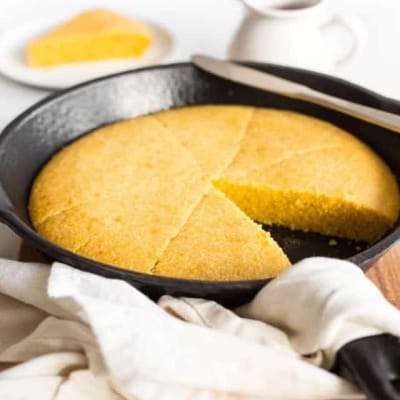
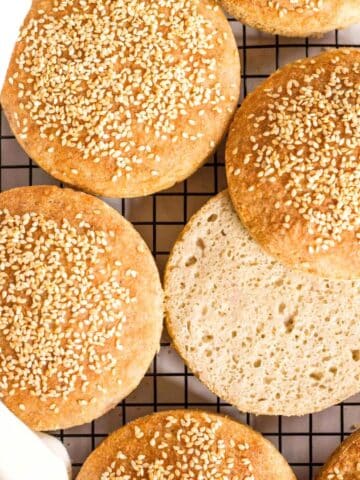
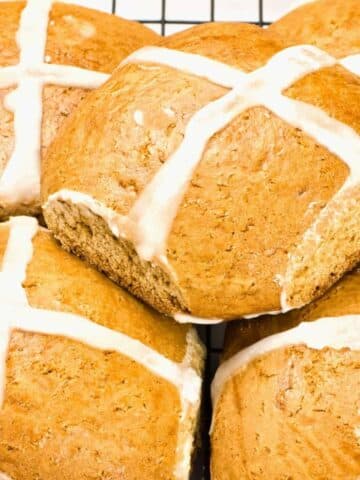
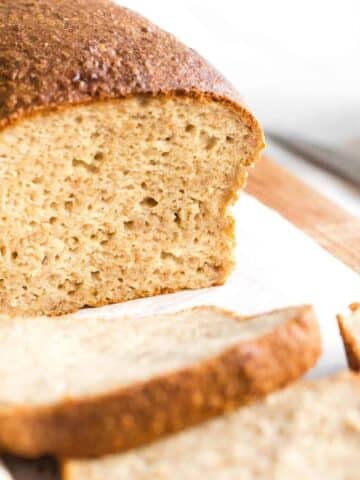
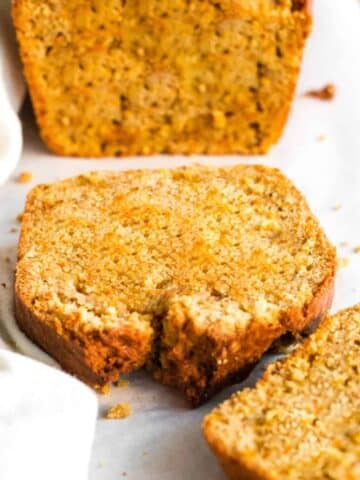
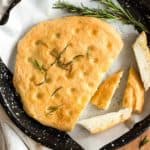
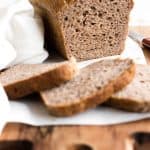
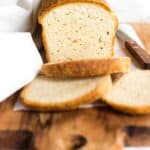
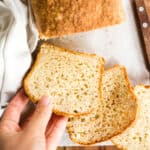

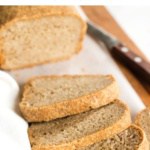
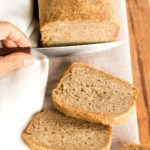
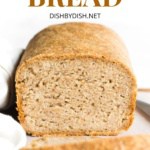
Felicia, this is the third time I have tried this recipe. I double checked all measurements and ingredients but my loaf continues to be flat and heavy. Tastes great but why is it not rising? My other breads seem to rise properly so don’t think it’s the yeast. Any ideas?
Hi Mary, this is a denser bread (it won’t be as fluffy as breads that are not made with whole grain flours – since by definition whole grain flours have more fiber and are denser). However, it also seems that your bread dough is not wet enough, so if you’re sure that the yeast is not the issues, maybe you could add 1/4 cup of warm water or unsweetened almond milk to make a wetter dough). A wetter dough will rise more. Hope this helps!
I am ready to make this but have a question about the xanthum gum. I am unable to digest any gums, can I add more psyllium husk powder as a substitute?
I have been baking with my own GF flour blend of:
white rice flour, sorghum flour, brown rice flour, potato starch, tapioca starch and psyllium husk powder- would this work?
Hi Leta, if you can’t take xanthan gum, go ahead and add more pysllium husk powder (for every 1 part xanthan gum, use 2 parts psyllium husk powder).
Good morning Felicia,
You know how I love bread and I especially love your bread selection posted for sharing with all of us.
Thanks for this bread recipe which I have added to my list of bread.
Love and blessings!
Mum
Yes, we both love bread! Like mother, like daughter!